While I was working with John Leyde on this issue’s Reader Built Boat story about building a skiff with his grandsons, I was particularly struck by why he had come up with his plan for the skiff in the first place. As he put it in an email to me: “With winter coming on, I found I was projectless.” There’s no question that building a boat with his grandsons was an inspired idea that would strengthen the family bonds and give the boys something to remember for the rest of their lives. But what surprised me was the sense of anxiety suggested by facing the future projectless. When I write “projectless” on my computer, the word gets a jagged red underline from the spellchecker, and Google won’t turn up a definition for it, but it is, in fact, a word. When I searched for it on the web, I came across the full text of an impenetrable academic treatise on creativity, which had, squirreled away on page 137, this lovely phrase: “the precariousness of projectlessness.” That scholarly affirmation that the impulse to take up projects could be linked to anxiety made me wonder about my own history of filling my time with boatbuilding projects that often go on for months. With the gunning dory, Dad and I did a lot more sailing than we did with his 27' sloop. Here I'm sailing with my sisters: Ellyn by the main, Laurie by the mizzen.
Join The Conversation
We welcome your comments about this article. To include a photo with your remarks, click Choose File below the Comment box.

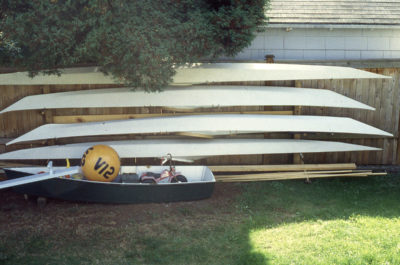

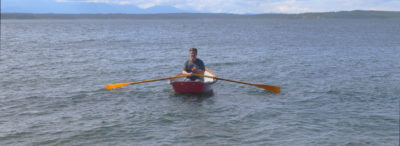
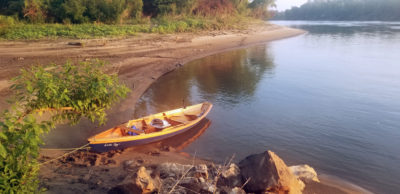
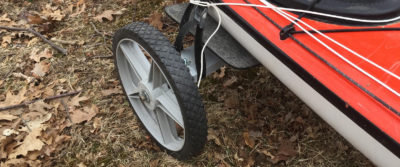
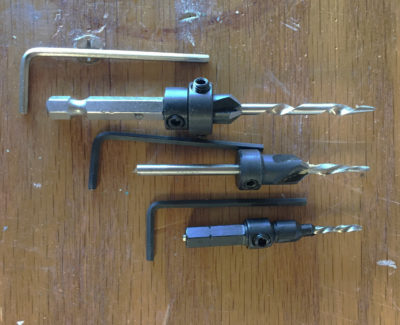
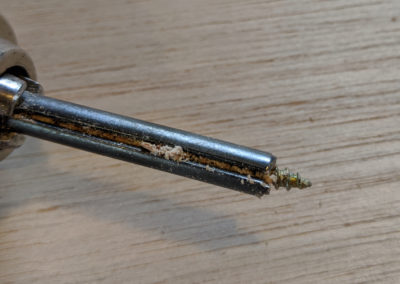
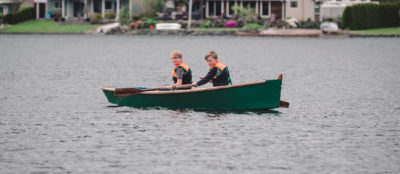
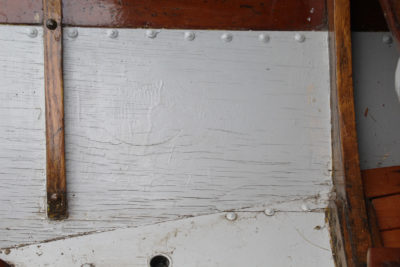
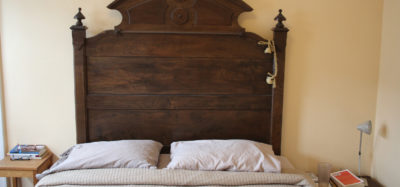


Well said!!
I have my pandemic Parkinson project. Recommissioning my Good Little Skiff. The project will stretch out as long as it needs to. Gets delayed by the dinghy and the dory needing paint, and then there is the lugger. No shortage of projects here.
Chris,
I really enjoyed your editor’s essay on “projectlessness” and thoroughly identified with it—if not quite with the extreme of letting 15 boats somehow pile up around the house. The pandemic lockdown has decidedly intensified my casting about for meaningful projects. If I don’t find good ones for myself and stay visibly busy, my wife will find them for me, and we all know what that means. Well, that’s not quite fair. A few weeks ago she brought a catalog to me that featured a movable herb garden. “Could you build something like this?” she asked. Absolutely! I grabbed some paper, sketched something much more complicated, and headed off to the lumber yard. So now we have this on our back porch. It’s sort of boat-like glued lapstrake construction using cedar-fence planks—and some leftover Kirby Marine topsides paint. And better than the one in the catalog, which I’m pretty sure did not bother with silicon bronze screws. As you can see in the photo, the herbs are thriving in it. We now have fresh oregano, basil, marjoram, dill, chives, garlic, and salad greens. She tends the crops—with obvious success—and since I’m the cook in the household, I literally reap the benefits. And we both enjoy the final results.
Larry
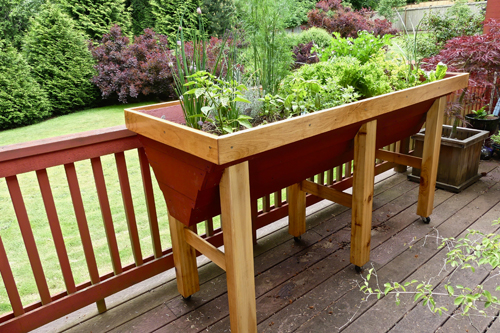
Yes!
Amen! If I don’t have some sort of project under way, I get very antsy. I do my best to select lower-cost projects, but sometimes websites and magazines such as this one get me dreaming and started on something more. But no regrets at all.
The uncertainty with the parenting territory, boatbuilding projects as a strategy for restoring self-confidence and peace of mind… I do really connect with your vision.
Thank you very much for putting it into words.
Pablo
I wish my boatbuilding projects only lasted months!
I am currently finishing my 9th boat, and fully understand the state of being projectless. When I am in my shop, it is my world. There is no pandemic, no race or equality problems. And I am fully mentally engaged (I design the boats I build) as well as getting great exercise (especially when fairing and sanding). I have sold boats, given away boats, and had the movers destroy a boat. When this one is done, I will have three boats. I have created plans and full-size patterns for a outboard runabout, but to complete and outfit such a boat is about $20K; too much for a project with no purpose. Fortunately, there are also non-boating projects. The important thing is to stay active and creative.
I’m rarely without a project involving woodworking and particularly boatbuilding. (Using my hands rather than my head has always been a great life therapy). I rarely need an excuse to build another boat but avoiding being precariously projectless adds to any justification I might need (particularly to my wife), so thank you for this insight.
A friend refers to me as “a nailer rather than a sailor” as I have now built six watercraft only two of which have actually got their bottoms wet (I definitely hope to get two of them in the water this year! Honestly!). This sobriquet is only partially fitting as no nail has ever been near one of my boats; the trouble is they look so nice when they’re finished that it seems a shame to get them messed up by actually using them.
Needless to say, boat number seven, a SCAMP, is just leaving the planning stage and beginning construction – I wouldn’t want to suffer from projectlessness, it sounds very nasty!
A huge load has lifted of my shoulders. All these years I was thinking I had some strange disorder about the deep desire to build boats out of wood.
As I knew no one around me had the same disorder.
I am so grateful to all of you for putting my mind at ease.
Nickolas
Thank you for letting me know that I am not the only person who builds boats he does not need – very comforting. However, it is your fault also that I now know about King Island Kayaks and want to build one. Are there any lines and information available to help a novice build one? I built one of Dave Gentry’s designs and plan to build another, but those are pretty complete instructions. I just loved the process of SOF, any advice appreciated!
I wouldn’t recommend the King Island kayak unless it’s a boat you don’t need and don’t intend to paddle. The only lines I know of are in Bark Canoes and Skin Boats of North America (figure 181). That specimen, collected in 1888, has a very slender bow. I found another King Island, one with a fuller bow, at the Washington State Historical Society Museum in Tacoma, Washington. I liked that one better, so I modeled mine after it. I built it in the early 1980s and after I finished it I found another source of information (I don’t now recall where) about how King Islanders used their kayaks. The hulls have narrow round bottoms that flare to meet the gunwales. The shape offers very poor initial stability, so the King Islanders would add rock ballast. After a successful hunt, the kayak would be further loaded with the kill, but the ballast would stay in place. The rocks would only be removed at the same place that they had been collected. The King Islanders used single-bladed paddles. That works well with the deep cockpit, but I found it slow going.
If you decide to build, David Zimmerly’s web site has good drawings of a King Island kayak and paddle, collected in 1928.
Thank you sir. Good advice (although I am sorry it was not the solution I sought). By the way, I bought Christopher Schwarz’s book on Ingenious Mechanicks and built two benches (a sort-of-Herculaneum, not elegant, and then a Sam Manning bench and anvil), which are my only benches when combined with a good set of wood screws. I also made and use the Head and Belly to carve spoons with – genius!. I will move on to a notch and a shave horse attachment. My machine-loving woodworker friends think I am a bit eccentric for all that but generally I can make the same thing in the same time with a whole lot less dust and more Zen. Thank you for that and keep writing!